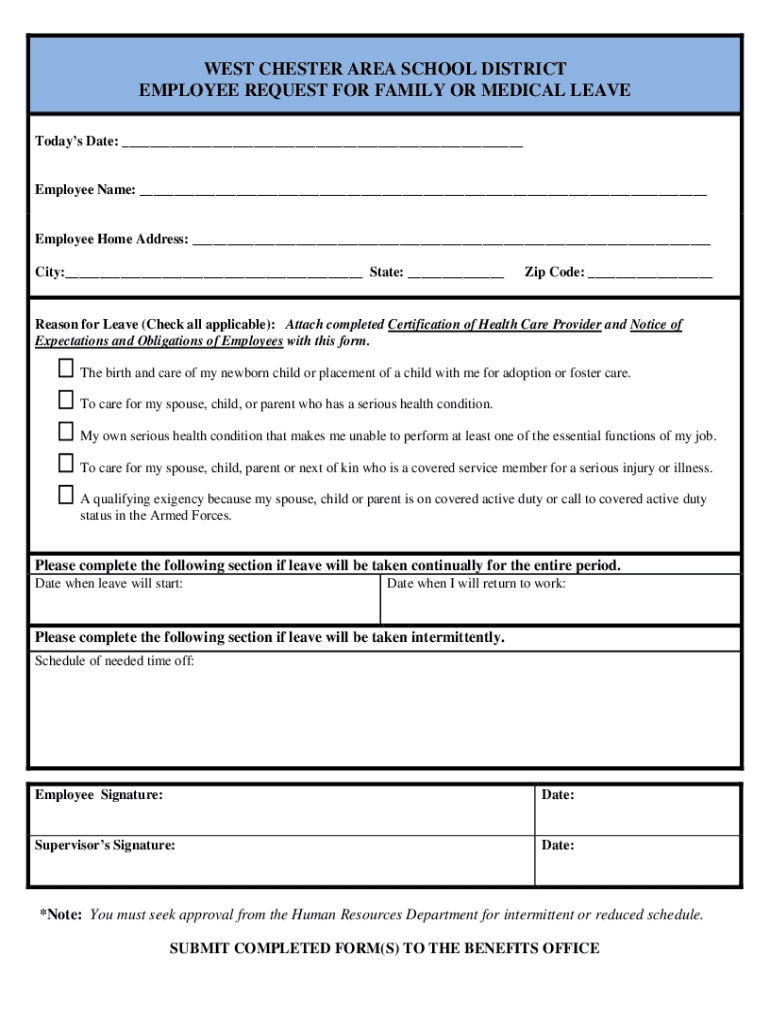Submitting FMLA Paperwork: Where and How to Do It

Understanding how to submit FMLA paperwork efficiently is crucial for ensuring that you secure the leave you're entitled to under the Family and Medical Leave Act. This guide will walk you through the process, providing insights on where and how to file your forms accurately.
Understanding FMLA

The Family and Medical Leave Act (FMLA) provides employees with up to 12 weeks of unpaid, job-protected leave per year. It applies to eligible employees who need to take time off for various reasons including:
- The birth and care of the employee's newborn child
- The placement of a child for adoption or foster care
- To care for an immediate family member (spouse, child, or parent) with a serious health condition
- Because of a serious health condition that makes the employee unable to perform the functions of their job
Who Can Submit FMLA Paperwork?

Before proceeding with the submission, ensure you qualify for FMLA:
- Work for a covered employer (private sector employer with 50 or more employees in a 75-mile radius)
- Have worked for the employer for at least 12 months
- Have worked at least 1,250 hours during the 12 months prior to the start of leave
- Work at a location where the employer has 50 or more employees within 75 miles
Steps to Submit FMLA Paperwork

1. Obtain the Necessary Forms

You’ll need to get the following forms:
- WH-380-E (Certification of Health Care Provider for Employee’s Serious Health Condition)
- WH-380-F (Certification of Health Care Provider for Family Member’s Serious Health Condition)
- WH-381 (Designation Notice)
These forms are available from the Department of Labor’s website or through your HR department.
2. Fill Out the Forms

Complete these forms with as much detail as possible:
- Employee Information: Your name, employee ID, position, etc.
- Leave Reason: Specify the reason for your leave (e.g., care for family member, personal health issue).
- Medical Certification: If your leave involves a health issue, a certification from your or your family member’s healthcare provider is required.
3. Gathering Supporting Documentation

Depending on your reason for leave:
- For a birth, provide details on the child’s birth.
- For adoption or foster care, include adoption/foster care documentation.
- For health reasons, have your healthcare provider fill out the certification form.
4. Submit the Paperwork

Here’s how you should proceed:
- Company HR: Deliver the forms to your HR department. They will verify eligibility and proceed with the leave process.
- Direct Submission: If you’re not able to go to the office, consider mailing or emailing the documents. However, verify with your HR for acceptable methods of submission.
Important Considerations

Timeliness

Submit your FMLA forms as soon as possible. Ideally, 30 days before the leave if it’s foreseeable. If not, do so as soon as practicable:
- Submit within 2 days for unforeseeable events.
- In emergencies, communicate with your HR as early as you can.
Intermittent or Reduced Leave Schedule

FMLA allows for leave taken in smaller segments, or a reduced work schedule, which can be helpful for managing ongoing treatments or conditions:
- Discuss with your HR how this can be accommodated.
- Your doctor can provide details on how this should be structured.
Employer’s Designation Notice

After submission, your employer will respond with a Designation Notice (WH-381) stating whether your leave is approved:
- This notice will include details on your rights and responsibilities during leave.
⚠️ Note: Always retain copies of all documents you submit for your records.
Throughout this process, maintain open communication with your HR or direct supervisor. FMLA is there to protect your employment during times when you or your family require your attention and care.
In summary, submitting FMLA paperwork involves understanding your eligibility, obtaining and completing the necessary forms, gathering supporting documentation, and submitting it promptly to your HR department. This process, though sometimes complex, is designed to offer you the necessary time away from work while protecting your job.
Can I take FMLA leave intermittently?

+
Yes, FMLA can be taken intermittently or on a reduced leave schedule if medically necessary for the health condition of the employee, their spouse, child, or parent.
What if I’m denied FMLA?

+
If your leave request is denied, review the eligibility criteria to ensure you meet all the requirements. If you believe you’re eligible, consult with HR or consider legal advice to address any potential misinterpretations or errors.
Is my job guaranteed when I return from FMLA leave?

+
Yes, under FMLA, your job or an equivalent position with the same pay, benefits, and terms of employment must be reinstated to you when you return from leave.
What if my family member’s condition worsens after my leave ends?
+If a family member’s condition deteriorates or changes, you might be eligible for more leave if you’ve not already taken the maximum FMLA leave. Discuss with your HR department to understand your options.



